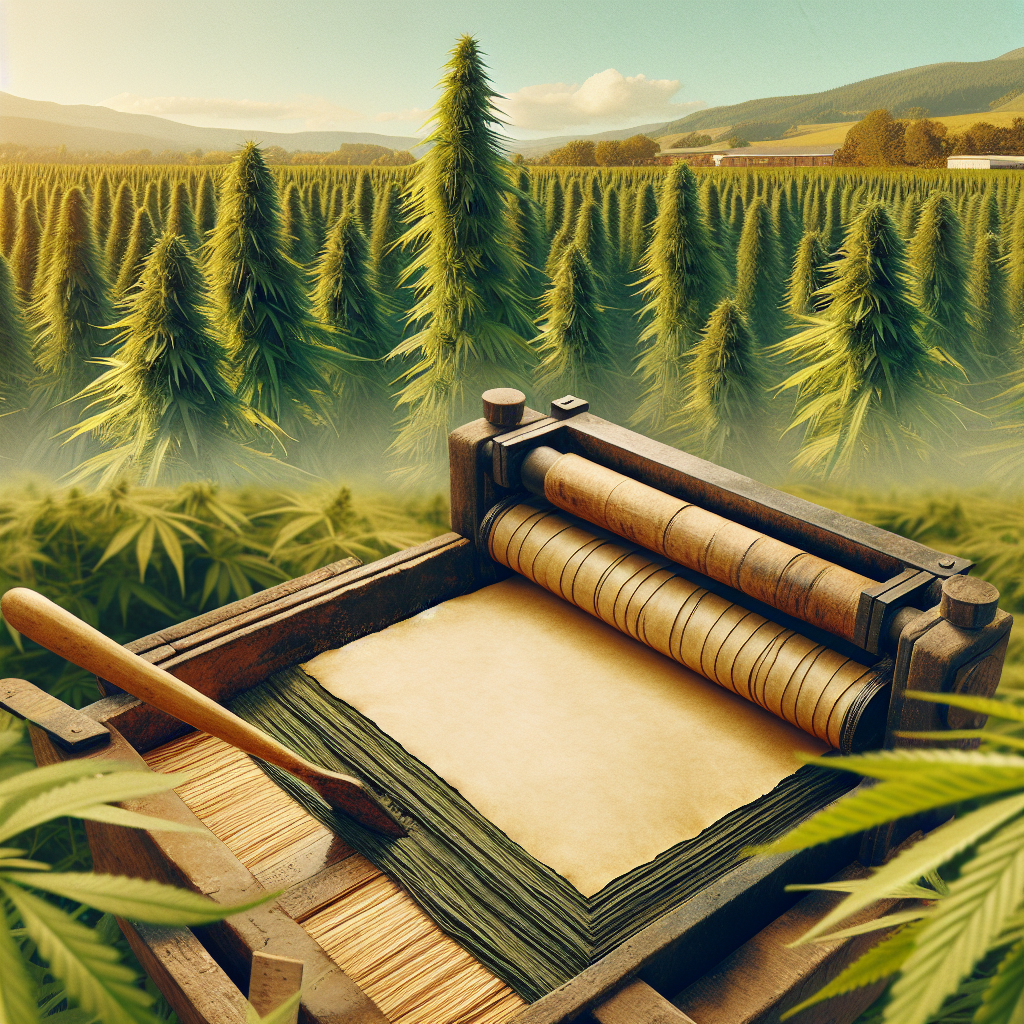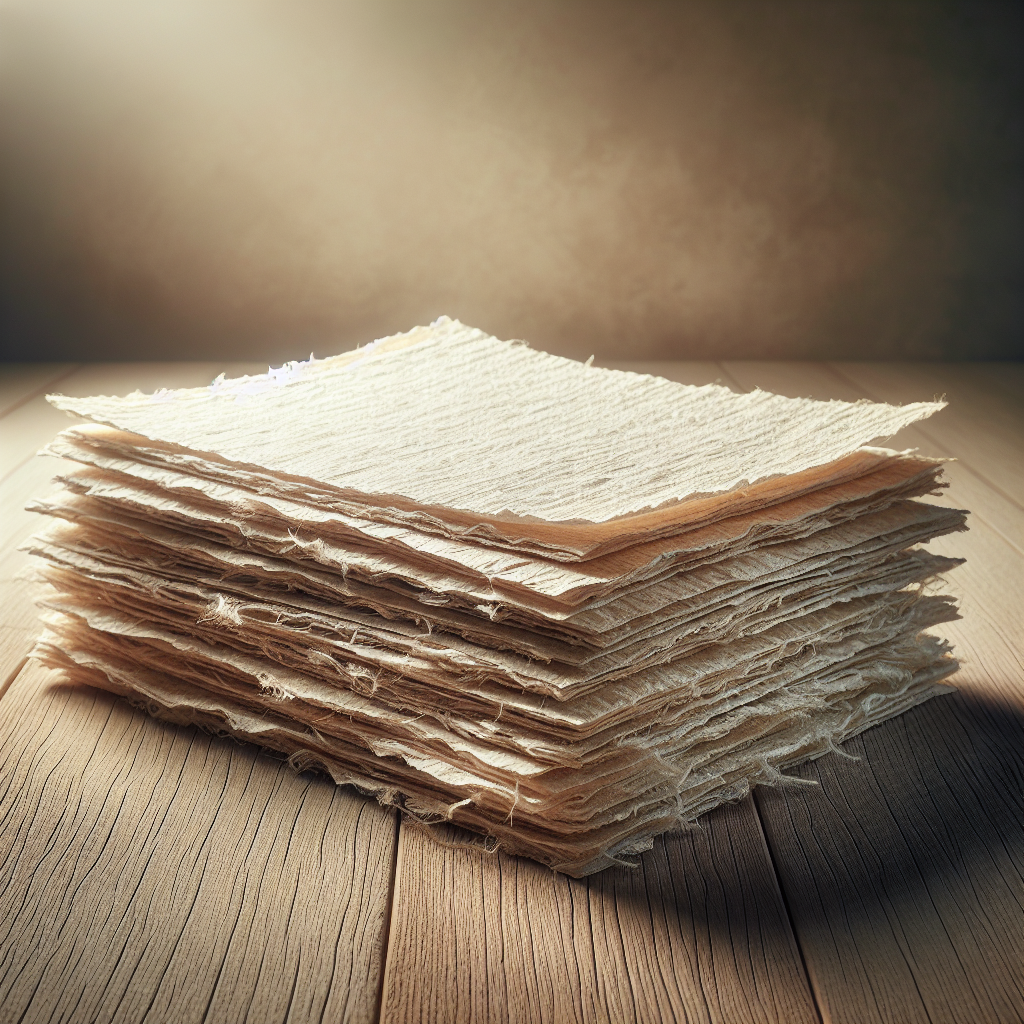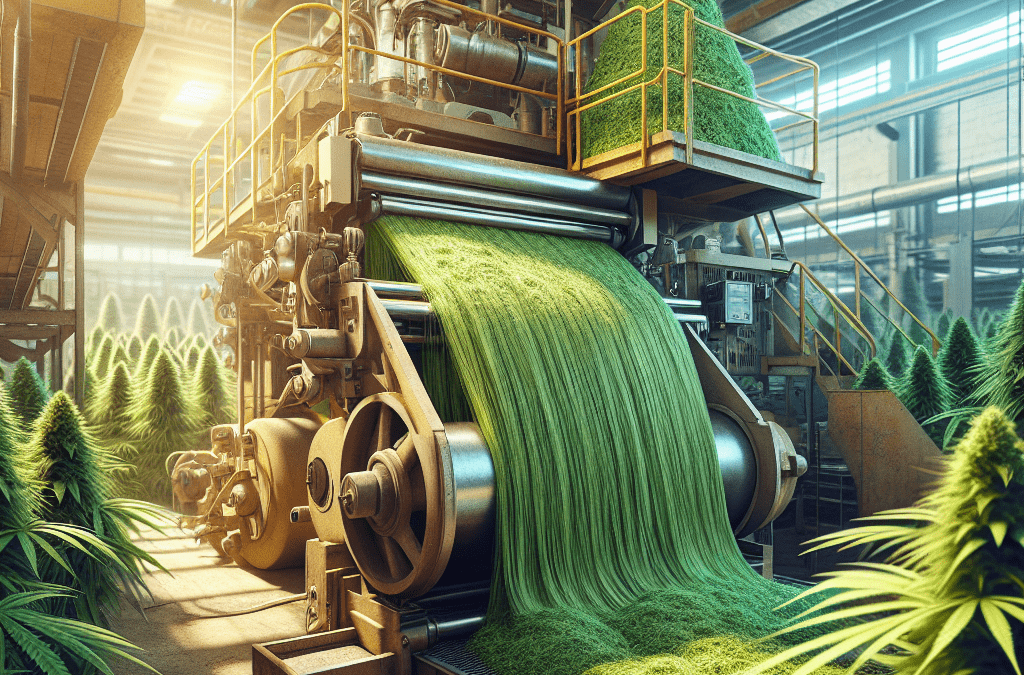Hemp paper has been utilized for centuries, dating back to ancient China, where it was first produced over 2,000 years ago. With the rising demand for sustainable and eco-friendly alternatives, hemp paper is making a significant comeback. Unlike conventional paper made from wood pulp, hemp paper is derived from the stalks of the hemp plant, which grows faster and requires fewer resources.
One of the key benefits of hemp paper is its *durability* and *longevity*. Hemp fibers are known for their strength, which allows the paper to withstand wear and tear much better than traditional wood-based paper. This makes it an ideal choice for archival documents, currency, and other applications where longevity is crucial.
As the world shifts towards greener solutions, understanding *how hemp paper is made* becomes essential. This guide will take you through the step-by-step process, from harvesting the hemp plant to producing the final hemp paper product. Whether you’re an eco-conscious consumer or a business looking to make sustainable choices, this journey into the world of hemp paper will be both informative and inspiring.
Interested in exploring other hemp-based products? Let’s start your Delta-8 brand with Smoke Show Labs, your trusted partner in Delta-8 (hemp) vape manufacturing, co-packing, and white labeling!
Sourcing Raw Hemp Materials

The first step in the production of *hemp paper* is sourcing high-quality raw hemp materials. The quality of the hemp stalks plays a crucial role in the overall quality of the finished paper. Hemp is typically grown in regions with favorable climates, such as parts of Europe, Canada, and the United States. The plant thrives in well-drained soil and requires minimal pesticides and herbicides, making it an environmentally friendly crop.
Farmers often choose specific hemp varieties that are best suited for fiber production. These varieties tend to have longer stalks and fewer branches, which are ideal for paper manufacturing. Once the hemp plants reach maturity, they are harvested, usually by cutting the stalks close to the ground. Timing of the harvest is important as it affects the fiber content and quality.
After harvesting, the hemp stalks undergo a process called *retting*, which involves breaking down the pectins that bind the fibers together. Retting can be done through natural methods, such as dew retting, where the stalks are left in the field to decompose naturally, or water retting, where the stalks are soaked in water. This process is essential for separating the long, strong fibers from the woody core of the stalk.
Once retted, the fibers are dried and baled for storage or immediate use in the paper-making process. Sourcing and preparing high-quality raw hemp materials sets the foundation for producing durable and eco-friendly hemp paper.
Hemp Fiber Extraction Process

After sourcing and preparing the raw hemp materials, the next crucial step in *how hemp paper is made* is the hemp fiber extraction process. This step involves separating the valuable fibers from the hemp stalks, which are essential for creating strong and durable paper.
The extraction process begins with *decortication*, a mechanical process that separates the outer bast fibers from the inner hurd, or woody core, of the hemp stalk. Specialized machines called decorticators are used in this stage. These machines break down the stalks and strip away the outer layers, leaving behind the long, strong fibers needed for paper production.
Once the decortication is complete, the extracted fibers undergo further cleaning and refining. This involves removing any remaining hurd particles and other impurities. The fibers are often combed and carded to ensure they are free from contaminants and uniformly aligned. This step is crucial as it enhances the quality and consistency of the fibers, which directly impacts the final product.
In some cases, chemical treatments may be applied to the fibers to improve their properties. This can include processes like bleaching to achieve a desired level of whiteness, although many manufacturers opt for unbleached fibers to maintain the natural, eco-friendly characteristics of hemp paper.
The cleaned and refined fibers are then ready for the next stage of the paper-making process, where they will be transformed into pulp. The meticulous extraction and preparation of hemp fibers ensure that the final paper product is both durable and environmentally sustainable.
Pulping Hemp Fibers for Paper

Once the hemp fibers have been meticulously extracted and cleaned, the next step in *how hemp paper is made* is pulping. This process transforms the raw fibers into a malleable pulp, which is the foundation for the paper-making process.
Pulping can be achieved using several methods, each with its own advantages. The most common techniques include mechanical pulping, chemical pulping, and semi-chemical pulping. In *mechanical pulping*, the fibers are physically ground down using machinery. This method is energy-intensive but retains a high yield of fibers, making it a cost-effective option.
*Chemical pulping*, on the other hand, involves using chemicals to break down the fibers into pulp. Common chemicals used in this process include sodium hydroxide and sodium sulfide. This method produces a higher quality pulp with fewer impurities and a more uniform consistency, ideal for high-grade paper products. The trade-off, however, is a lower yield of fibers and the need for chemical recovery systems.
For a balance between yield and quality, *semi-chemical pulping* is sometimes employed. This method combines mechanical and chemical processes to produce pulp that retains some of the mechanical strength of the fibers while achieving a higher quality than purely mechanical pulping.
Regardless of the method used, the pulping process results in a slurry of hemp fibers suspended in water, known as *pulp*. This pulp is then washed to remove any residual chemicals and impurities. The cleaned pulp is ready for the next stage of paper production, where it will be formed into sheets and dried. The choice of pulping method can significantly impact the characteristics of the final hemp paper, including its strength, texture, and environmental footprint.
Sheet Formation and Drying
After the pulping process, the next crucial step in *how hemp paper is made* is the formation of sheets and drying. This stage transforms the cleaned hemp pulp into the recognizable paper sheets we use daily.
The process begins with the *sheet formation* phase. The pulp mixture, which is about 99% water and 1% hemp fiber, is spread evenly onto a mesh screen or a moving belt known as a *Fourdrinier machine*. This machine helps to evenly distribute the pulp, allowing the water to drain away and leaving a mat of intertwined fibers.
During this stage, the mat is often subjected to a series of mechanical actions, such as pressing and shaking, which help to remove more water and bind the fibers more tightly together. This results in a wet, but coherent, sheet of hemp paper.
Next comes the *drying* process. The wet paper sheet is passed through a series of heated rollers or drying cylinders. These rollers gradually evaporate the remaining water content, further consolidating the fibers and giving the paper its final strength and texture. The temperature and speed of the rollers must be carefully controlled to prevent the paper from becoming too brittle or warped.
In some cases, additional treatments may be applied to the drying paper for specific qualities, such as *sizing* to improve water resistance or *calendering* to achieve a smoother surface finish. These treatments enhance the paper’s usability for various applications, from printing to packaging.
Once the drying process is complete, the paper is wound onto large rolls or cut into sheets, ready for further processing or distribution. The careful control of *sheet formation and drying* ensures that the final hemp paper is of consistent quality, durable, and suitable for a wide range of uses.
Finishing and Uses of Hemp Paper

The final stage in *how hemp paper is made* involves finishing and exploring the diverse uses of this eco-friendly product. After the drying process, the hemp paper undergoes additional finishing treatments to enhance its properties and prepare it for various applications.
**Finishing** steps may include *calendering*, where the paper is passed through rollers to achieve a smooth, glossy surface. This process not only improves the paper’s appearance but also enhances its printability. Another common finishing treatment is *sizing*, which involves adding substances to make the paper more resistant to water and ink. This is particularly important for applications such as writing paper or printing materials, where ink absorption needs to be controlled.
Once the finishing touches are applied, hemp paper is cut into standard sizes and packaged for distribution. Its unique properties make it suitable for a broad range of uses:
- Printing and Writing: Hemp paper offers a high-quality surface for printing and writing, making it ideal for books, office paper, and stationery.
- Packaging: The strength and durability of hemp paper make it an excellent choice for packaging materials, including bags, boxes, and wrapping paper.
- Art and Craft: Artists and crafters appreciate hemp paper for its texture and longevity, using it for drawing, painting, and various craft projects.
- Specialty Products: Hemp paper is also used in producing specialty items like currency, archival documents, and even filters.
The versatility and environmental benefits of hemp paper make it an attractive alternative to traditional wood-based paper. By opting for hemp paper, businesses and consumers can reduce their ecological footprint and promote sustainable practices.
Ready to take the next step in sustainability? Let’s start your Delta-8 brand with our expert co-packing and white labeling services. Smoke Show Labs is here to help you make a difference.

